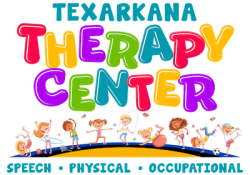What is Dysgraphia?

Possible OT Suggestions for a Child with Dysgraphia
Classroom Management
Concentration
Fine Motor
Address handwriting difficulties such as spacing, legibility, sizing, and formation
Organization
If your child is struggling with any of these listed areas we highly encourage you to speak with your pediatrician or diagnostician. Upon referral, Texarkana Therapy Center would be happy to provide your family with a comprehensive evaluation for occupational or speech therapy.
Try our Free Online Screening Tool
If you are not in therapy and you are wondering if your child may be falling behind with sensory processing, fine motor skills, speech and language or developmental milestones, please try our online screening tool. You will be given a survey of age-appropriate milestones for speech, language, gross motor skills, fine motor skills and sensory processing for children ages 1-6.
Previous Story


